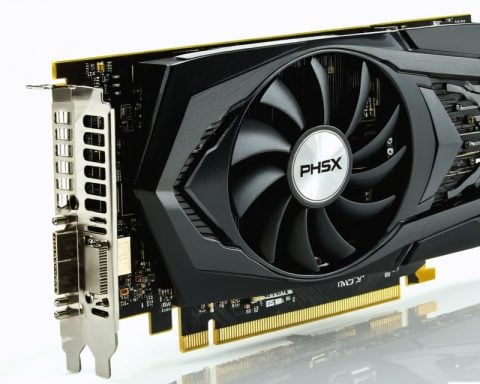- Nvidia’s RTX 50 series GPUs promise high performance but have dropped support for 32-bit CUDA applications, including PhysX technology.
- PhysX, once a revolutionary feature for realistic gaming physics, now faces obsolescence, unable to keep up without GPU support.
- The removal of PhysX support was quietly communicated via a support page, leading to disappointment among fans of older games.
- Despite cutting-edge claims, the RTX 50 series has sparked debate about whether it represents a true generational leap, as modern gaming engines surpass old limitations.
- The broader conversation highlights that innovation may not always require surpassing the past, but thoughtfully pacing future advancements.
- Rising GPU prices and diminishing enthusiasm challenge Nvidia’s new offerings, questioning market trends and unrealized expectations.
Nvidia’s cutting-edge GPUs, the RTX 50 series, burst onto the scene with promises of unparalleled performance. Yet, in a subtle maneuver, Nvidia has axed support for 32-bit CUDA applications, including the nostalgic PhysX technology. Remember PhysX? It once delighted gamers with its revolutionary ability to animate lifelike particles, like flickering smoke and splintering glass. Once the crown jewel in games like Mirror’s Edge and Batman: Arkham City, it now struggles to keep up with its GPU-less existence, as scenes that should dazzle now sputter under the weight of CPUs.
The tech giant quietly announced this pivot through a support page, leaving avid fans puzzled as games like Borderlands 2 lag behind, despite their powerful setup. It’s an era where yesterday’s showcase features fade into the recesses of nostalgia, leaving only a handful of cult classics—and even fewer who mourn.
While the swan song of PhysX echoes faintly, the bigger story lies in the unmet expectations surrounding Nvidia’s new cards. Modern gaming engines have surpassed the physics limitations that PhysX once conquered, softening the blow. Nonetheless, as gamer chatter fills threads and forums, many ponder: Are Nvidia’s RTX 50-series cards truly the generational leap they promised? Market trends whisper no; the supposed worthy successor lags in allure, struggling against climbing prices and waning enthusiasm.
The moral of this tale? Perhaps innovation isn’t always about outrunning the past but rather pacing the journey into the future with new promises and fewer forgotten treasures.
Is Nvidia’s RTX 50 Series Worth the Hype? Find Out What They Didn’t Tell You!
How-To Steps & Life Hacks
Optimizing Performance in NVIDIA RTX 50 Series:
1. Update Your Drivers: Always ensure your drivers are up-to-date through the official NVIDIA driver download page. This helps harness new features and improvements.
2. Adjust Game Settings: Tailor settings to your system configuration. Use GeForce Experience to automatically optimize game settings for your PC specs.
3. Energy Efficiency: Utilize power-saving modes in the NVIDIA Control Panel to balance performance and energy use.
4. Monitor Temperature: A reliable system monitoring tool can help you ensure your GPU is operating within safe temperatures to prevent throttling.
Real-World Use Cases
– Gaming: The RTX 50 Series supports ray tracing and AI-enhanced gaming, providing superior graphics and faster frame rates in high-resolution gaming environments.
– Creative Applications: Content creators benefit from reduced rendering times in software like Adobe Premiere Pro and DaVinci Resolve due to increased CUDA core count.
– AI & Machine Learning: The enhanced processing power and Tensor Cores cater to AI engineers running large, complex models.
Market Forecasts & Industry Trends
According to market analysts, while NVIDIA’s RTX 50 Series showcases technical improvements, the adoption pace is slower than predecessors due to higher price points and diminishing returns on performance enhancements. [Source: TechRadar]
### Reviews & Comparisons
Reviewers have noted that while the RTX 50 Series offers meaningful advancements in terms of computational power, the jump isn’t as significant compared to earlier generational releases. The value proposition against competition like AMD’s latest graphics cards is a frequent point of discussion. [Source: Tom’s Hardware]
Controversies & Limitations
1. 32-bit CUDA Application Support Dropped: The dropping of 32-bit support has frustrated some legacy application users, creating a barrier for older games and software.
2. High Cost: Increased pricing is a deterrent, especially with current economic constraints affecting potential buyers. Cost vs. performance gained is widely debated.
Features, Specs & Pricing
– Architecture: NVIDIA’s Ada Lovelace
– Ray Tracing Cores: 3rd Generation
– CUDA Cores: Over 18,000 in top models
– Memory: Up to 24 GB GDDR6X
– Price Range: Starting at $1499 (subject to retailer pricing)
Security & Sustainability
NVIDIA continues to prioritize security with regular updates and patches. Sustainability efforts are seen in energy-efficient designs aimed at reducing power consumption. Recycling programs for old GPUs help promote environmental responsibility.
Insights & Predictions
Future trends suggest GPU designs will integrate even more AI-driven operations for realistic gaming and content creation. NVIDIA is expected to advance in cloud gaming with more affordable options for players to access high-end gaming hardware remotely.
Tutorials & Compatibility
NVIDIA provides comprehensive tutorials for setting up the RTX 50 Series cards on their official website. Ensure compatibility with existing components by verifying power supply and case dimensions.
Pros & Cons Overview
Pros:
– Superior Graphics Handling
– Excellent for AAA Games and VR
– Advanced Ray Tracing
Cons:
– High Price Point
– Dropped Support for Legacy Software
– Rising Energy Costs
Actionable Recommendations
1. Check Compatibility: Assess your complete PC setup to avoid compatibility issues. Ensure power supplies and space accommodate the new GPU.
2. Assess Needs: Evaluate if the RTX 50 offers sufficient benefits over current-generation models before purchasing.
3. Explore Alternatives: Consider NVIDIA’s cloud-based solutions such as GeForce Now if upgrading isn’t an immediate option.
For more information about NVIDIA products, visit the NVIDIA official website.



















